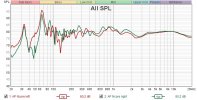PeterNL
Member
Hi ASR community. I have recently changed my whole audio setup, went from Topping D10s, Moon I-1 (Moon 250i) and Audio Physic Yara Evolution to SMSL Sanskrit 10th mk2, Audiophonics HPA-S250NC and Wharfedale Linton Heritage.
I am very happy of my new setup but my room i just a small living room where I enjoy my time with my wife and daughter. Room is with open kitchen, not acoustically treated.
Please look at the graphs if you have a time, does it look very bad ?
I have also Dirac Live standalone, which i`m going to use in the future, already using it with my Kali LP6v2 in my other room.
In advance thanks for any advice and comments.
BTW thank you ASR for every information, great community which helped me to choose the right path in my audio experience and also helped saving a lot of money and protect me from BS and snake oil things.












 -
-






I am very happy of my new setup but my room i just a small living room where I enjoy my time with my wife and daughter. Room is with open kitchen, not acoustically treated.
Please look at the graphs if you have a time, does it look very bad ?
I have also Dirac Live standalone, which i`m going to use in the future, already using it with my Kali LP6v2 in my other room.
In advance thanks for any advice and comments.
BTW thank you ASR for every information, great community which helped me to choose the right path in my audio experience and also helped saving a lot of money and protect me from BS and snake oil things.
Attachments
Last edited:

